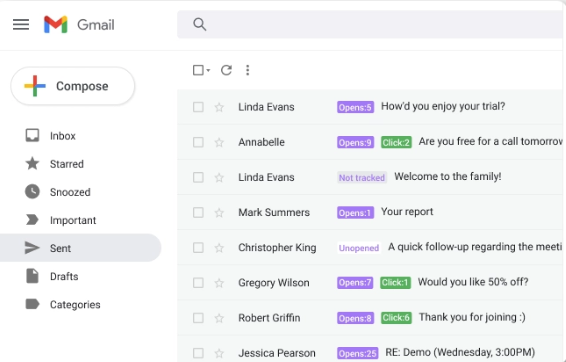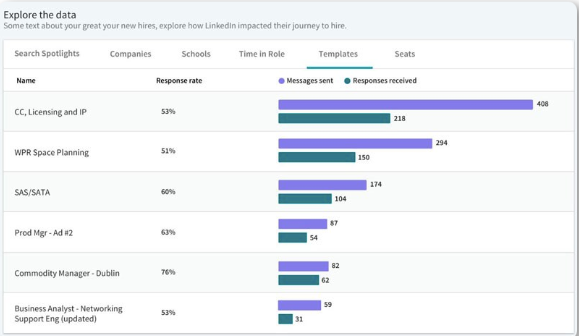
No point in denying the truth: LinkedIn has become the leader in the field of attracting B2B prospects, because the statistics says: approximately 80% of B2B clients come from this service. And yet, when it comes to the outreach strategies, there’s still no certainty as to which one is the most effective option: LinkedIn InMails or the good old emails.
So which is the best option to go for?
In this article, we’re going to compare these two channels, share a few usage examples, and help you determine which method is the best for you if you want to pitch your offering to your prospects.
What are LinkedIn InMails?
First of all, let’s make sure you’re well aware about the specifics of LinkedIn InMails.
If you’ve ever tried outreaching prospect clients on LinkedIn, you know how difficult it is sometimes to get in touch with 2nd or 3rd connections even though you know your interaction will bring benefits to both of you.
Normally, you are unable to send someone a message if you’re not connected to them. But the LinkedIn InMail option allows communication outside of the circle of your direct connections. This is what makes this premium feature so popular.
Opt for new or traditional?
Needless to say, both traditional emails and LinkedIn have strengths and weaknesses compared to each other. So it’s worth knowing the peculiarities of these two channels and evaluating them against key aspects that matter the most for businesses.
1. Pricing
The first aspect you need to take into account before making up your mind is how expensive the tool will be for your business, right? While conventional emails are free of charge, LinkedIn InMail, as mentioned above, belongs to paid functionality, so it will definitely cost you an arm and a leg.
On the positive side: according to the LinkedIn guidelines, you can receive credits back for messages that have been answered within 90 days of the send date. On top of this, you can collect InMail credits for several months. But note: there are restrictions on the total number of InMail credits you can accumulate – the maximum number you can get is 150 InMail credits.
2. Effective follow-ups
Establishing warm relationships and prompting your leads to buy things can’t be achieved without proper follow-ups. More often than not, according to statistics, half of the sales happen only after following up (around the 5th contact)!
For example, if your lead hasn’t responded to your first email, you can send them as many follow-ups as you’d like for free. But with InMails it’s a different story: if you want to send an InMail to a lead you’ve contacted before and who hasn’t responded to your first proposal yet, you will be charged one more credit.
3. Analyze your data
Regardless of which outreach strategy you go for, your marketing steps should be guided by statistics. You need to adopt the data-driven approach: review all your messages with leads, analyze the results, and improve your communication with clients based on these obtained results.
With good old emails, you can always gauge the performance of your campaigns – there are many tools that can do the trick for your outreach. For example, with an email tracking app, you can track email
opens, bounce rates, conversion rates, and see link clicks right in your Gmail. Also, you are able to analyze the entire history of email opens, and get alerts when it’s the best time to follow up.

With LinkedIn InMails, it’s also possible to extract the statistics. You can check metrics such as delivery and response rates of the InMails you sent, see the number of messages that were declined or unanswered. But again, keep in mind: unlike free email tracking software, InMail analytics is a premium feature you should pay for.
 Source: LinkedIn
Source: LinkedIn4. Time is gold
The effectiveness of any marketing campaign depends greatly on the timing. Are you sure you’re contacting your leads at the right moment? And that’s where InMail comes to rescue as it has unique advantages. On LinkedIn, you can see which people from your circle of connections are online, so you can send them a message right away.
Unlike LinkedIn messages, using traditional emails, you are never sure you’re catching your leads when they are online and are going through their inboxes. So, it’s no wonder that the perfect timing and frequency for sending messages have been thoroughly researched by many specialists. Sales reps and marketing experts invest a great deal of effort, trying to figure out the right time to send newsletters and achieve the best open and response rates.
5. Rates that matter: open and response
If we compare two channels in terms of convenience of statistics, LinkedIn InMail looks more powerful than traditional emails. The average email open rate is a bit more than 20%, while the InMail open rate is estimated to be around 60% (!!!). When it comes to the response rate, it’s between 10% and 30% for LinkedIn InMails, while good old emails can be from 1 to 10%.
The reason for such a discrepancy is obvious: the number of email and InMail users is different. The LinkedIn members are around 756 million users, while traditional email is utilized by approximately 4 billion users. So, you have more opportunities to get in touch with leads with an InMail as compared to a good old email.
More than that, if you decide to take advantage of an InMail, the person you’ll contact will be able to click on your profile and learn more about who you are, your background, your business, products and services, and more, which makes LinkedIn messages way more informative and trustworthy for the user.
7. Automation
If you are aiming at big audiences and are going to send mass emails, you should consider special tools to automate your efforts and do bulk outreach of your prospects. Fortunately, now you can use such apps for emails and InMails alike.
Email automation software lets you send out scheduled messages taking into account recipients’ preferences and behavioral metrics. For example, with some automation tools, you can create advanced email campaigns involving trigger actions, multi-step chains of messages, automated responses and follow-ups, as well as built-in tracking and analytics systems that analyze your campaign performance.
LinkedIn also comes with automation tools that take care of follow-up messages on your behalf, allowing you to achieve the desired level of engagement with your leads and check the success of your InMail campaigns.
8. Restrictions
Regardless of the channel you decide to choose, you need to know that you’ll have to face restrictions and limits on the number of messages you can send. Breaking these rules will result in the ban imposed on your mailbox or LinkedIn account.
The email sending limits are normally set by the email provider you use. Some of them offer beneficial terms of sending up to 10K emails a day or even unlimited opportunities. While LinkedIn allows sending approximately 100 InMails per month.
To Sum Up
The emerging popularity of the LinkedIn platform has brought a whole new channel to communicate with leads for marketing and sales experts. InMails are a promising solution for professionals who don’t use bulk newsletters yet and are ready to pay for the convenience of finding leads and contacting them right away under one roof, on a single platform.
At the same time, traditional emails remain a stable, time-tested, and effective outreach channel that you can take advantage of for free and use it for mass campaigns. On top of this, the traditional newsletters allow sending targeted messages to a thoroughly segmented base of leads, analyzing the results, and increasing your conversion rate thanks to the automation tools.
We hope our guide will be helpful for you in your marketing efforts. Best of luck with your outreach strategies!

